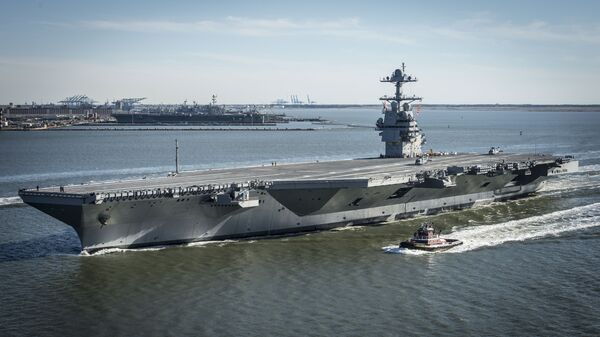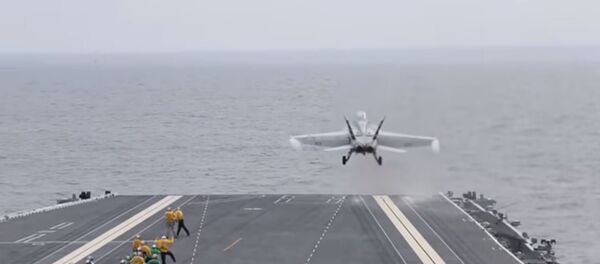The troubled carrier, which began undergoing its post-shakedown availability (PSA) period in July 2018, was originally expected to complete its 12-month review following at-sea trials in July 2019. However, that's no longer the case.
James Geurts, US Navy assistant secretary for research, development and acquisition, told the House Seapower and Projection Forces Subcommittee on Tuesday that meeting the July deadline was no longer possible, and that it was more likely that the vessel would be ready to go in October 2019.
"Obviously, we would have liked to have gotten out in July," Geurts told lawmakers. "I'm never happy delivering a ship back to the fleet late."
When asked by Rep. Rob Wittman (R-VA) whether he was confident about the carrier being delivered in October, Geurts stated, "With the information I have right now, sir, that's where we're sitting."
Since beginning its PSA period, a timeframe set aside so engineers can identify and solve any problems in the Ford's construction, officials have been continuously working to repair issues with the carrier's nuclear propulsion system and weapons elevators.
According to USNI News, the elevators have experienced reliability issues caused by software setbacks, leaving only two of the 11 meeting the Navy's standards. As for the propulsion system, technical issues reportedly stem from the ship's main turbine generators, which are powered by the steam from the two nuclear reactors aboard the vessel.
Sources with knowledge of the repairs told the naval publication that issues with the generators have resulted in "unanticipated and extensive overhauls."
The US Navy's costly supercarrier, however, is no stranger to coming up short. When the carrier was delivered in 2017 to the US Navy, it lacked the 11 weapons elevators needed to better transfer munitions from below deck to fighter jets. And that's not all — the Ford has also experienced some issues with its electromagnetic aircraft launch system and the advanced arresting gear that allows a jet to decelerate as it lands on the deck.
And still, despite all these major hiccups, naval officials aren't giving up on their dream of getting a new-and-improved carrier added to their fleet. In fact, in January 2019, the US Navy ordered two more Ford-class carriers, claiming that the dual order would save taxpayers some $4 billion.
"Had we waited a long period of time, the savings opportunity would have decreased because we would have already been well into construction and material purchase of CVN-80," Geurts said at a Pentagon briefing at the time.
"There was some urgency to fully capitalize on the savings potential for this two-carrier buy."
The January order is expected to cost some $24 billion, with the ships themselves costing a whopping $15 billion, Defense One reported at the time. The remaining $9 billion will cover costs associated with government-furnished equipment that the Navy will scoop up separately.
CVN-78 is expected to deploy in 2021, although that could shift depending on whether or not officials are able to get the ship up and running to naval standards. Defense One reported that the two ships ordered in January are expected to join the Navy's fleet in 2028 and 2032.





